Updated Daily. Chechen Leader Ramzan Kadyrov joined the “Night Wolves,” a bikers’ gang that Putin has favored. Russian press and social media mined the popular social media network VKontakte for information on Russian paratroopers said to be killed or captured in Lugansk Region in Ukraine; oddly, some pictures were removed of armored vehicles and a draft notice, and some accounts were deleted. Four Russians were placed under house arrest pending trial for a stunt involving the painting of a Stalin-era building’s star in the colors of the Ukrainian flag; mystery painters then struck again. Moscow authorities have closed four McDonald’s restaurants ostensibly for sanitation violations, sparking a lot of social media commentary. Pro-Kremlin propagandist Konstantin Rykov used a fake photo in Ferguson commentary on Twitter.Chechen ruler Ramzan Kadyrov ordered 1,000 guests at a state function interrogated after an entertainer lost her phone. While Siberian autonomy demonstrators were banned and arrested, bikers promoting Russian fertility were allowed to ride through Novosibirsk. Protesters seeking greater freedom for Siberia were arrested in two cities, and received solidarity from some Ukrainians but hate messages from fellow Russians.
For last week’s issue, go here. Siberian activists were denied a permit for a rally. New reports of a Russian battalion with Chechens and others from the North Caucasus surfaced and videos were found to confirm their involvement. The followers of Col. Igor Strelkov, the charismatic separatist leader who resigned from the “Donetsk People’s Republic” were distraught. The trial of opposition leader Alexey Navalny in the Yves Rocher East case resumed. Prime Minister Medvedev’s Twitter account was hacked with a claim he was resigning in shame and protests against the Crimean annexation and robbing of pensions to pay cost of forcible annexation; a hacker’s group called Shaltai Boltai took credit for the unauthorized access, then claimed to leak his e-mail, which they found “boring.” Following confusion and wishful thinking that new regulations regarding Internet access will not be so restrictive, Russia’s Minister of Communications clarifies that ID of some form if not a passport will be required to access wi-fi and will be recorded. A pro-government Anti-Fascist Committee was formed to fight Western influence. South Stream pushes forward as EU gas dependence makes it hard to take strong action on Ukraine. If Russian “humanitarian convoy” enters Ukrainian territory, this will validate a Russian military presence in Ukraine.
For the previous week’s stories: Ultranationalist Zhirinovsky threatens annihilation of Poland, Baltics if West retaliates against Putin’s aggression in Ukraine. Prime Minister Dmitry Medvedev sprang two restrictive Internet decrees on providers and users this week, one requiring presentation of domestic passports to use public Internet cafes or wi-fi, and the other mandating operators of social media to collect more user data and make it available to Russian intelligence agencies. Russian leakers’ site blocked after hackers exposed hardliner’s emails. Russia offers bounty for cracking Tor, Snowden’s favorite tool. Snowden’s resident permit was extended, but it’s not political asylum and he must rely on the kindness of strangers. Mysteriously, a group calling itself the “Initiative Group of Moscow Students” gained access to the heavily-guarded area by the US Embassy in Moscow — and also got on the roof of the Kiev Station — to unfurl racist and obscene banners against President Obama and Ukrainian President Poroshenko. Kharkiv Mayor Gennady Kernes installed two Russian businessmen as “honorary citizens” by a city council decree, sparking concerns of instability as Russian troops mass nearby on the border. A Moscow ultranationalist who tried to join the separatists in the “Donetsk People’s Republic” was jailed and tortured on suspicion that he was a spy, but still supports the cause. Aleksandr Prosyolkov, a long-time Russian ultranationalist activist from Rostov-on-Don was killed outside Krasnodon in Lugansk Region by separatists he was trying to help with a load of humanitarian aid. The roots of the pro-Russian separatist leaders fighting in southeastern Europe actually go back to ultranationalist groups in Russia active in the last 20 years, says Russian expert Vladimir Pribylovsky.
Please help The Interpreter to continue providing this valuable information service by making a donation towards our costsâ€.
Chechen Republic President Ramzan Kadyrov has joined President Vladimir Putin’s favorite motorcycle gang, the Night Wolves.
The Chechen strongman posted a report on his Instagram account today August 24:
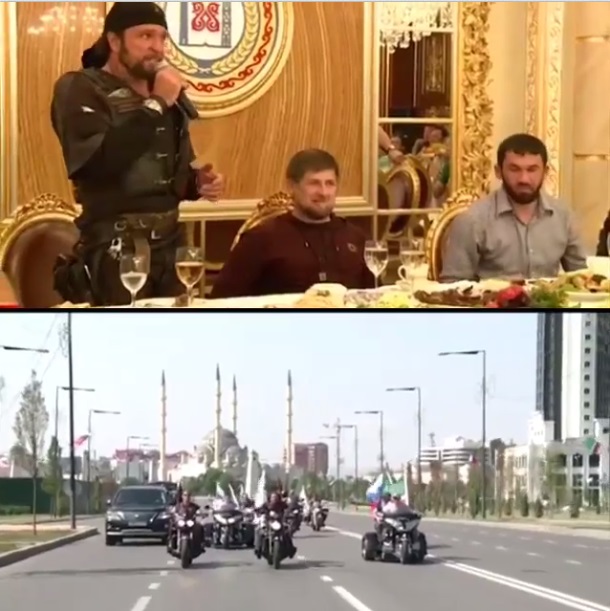
Translation by The Interpreter
Dear Friends! On Sunday evening I gave a festive dinner in honor of dear friends from the bikers’ club “Night Wolves.” They came at my personal invitaiton. Aleksandr the Surgeon stated that in theory, what he saw in Grozny and other cities couldn’t happen, yet it was reality. I was simply amazed, it is a fairy tale, it is a phantasy, he emphasized.
I am grateful to Sasha [Aleksandr] for his warm words about Chechnya, about our First President, Hero of Russia Akhmate-Hadji Kadyrov [Ramzan’s father], and our team. Surgeon expressed sincere gratitude for our decisive support of the people of Crimea. Sasha really is a SURGEON. He he is always there with is guy when needed.
Our Motherland is Russia! This is a man with state thinking, a clear and firm position about the most important issues. Speaking on the 100th anniversary of the Dikaya Division, I noted that today the best sons of the Chechen people are ready at any minute to stand in defense of the Motherland!
Russia has never knelt before anyone, but if someone gets that idea into their head, we will place him so that he never stands again! And I want to state that today in Grozny, a chapter of the “Night Wolves” has appeared. And I am made a member of the “Night Wolves” by a unanimous decision of the veterans of the club. As a sign of testimony, I was given the club’s bracelet. We took a lot of photos as souvenirs today. #Kaydrov @AkhmatHadji #Surgeon #NightWolves
“Surgeon” is the nick-name of Aleksandr Zaldostanov, who has met with Putin a number of times, notably when the president awarded him with the prestigious “Order of Honor” for his work with youth. He surfaced on 28 February of this year in Simferopol with a motorcycle rally when Russia began its armed takeover of the Crimea, and since then has been part of various pro-separatist Russian Orthodox rallies.
Opposition leader Boris Nemtsov reported in a Facebook post that his colleague and co-author Leonid Martynyuk was arrested in Krasnodar August 23.
He says that when Martynyuk and his wife Katerina were travelling on the commuter train from Sochi to Krasnodar, a provocateur attacked Leonid and the police wound up seizing him and accusing him of “hooliganism” (Art. 20-1). His wife tried to defend her husband and was also detained and at first an attempt was made to charge her as well with “resistance to a police officer” (Art. 19-3). Katerina was ultimately released, but Leonid is now threatened with 15 days in jail.
Nemtsov fears that this incident was staged in retaliation against Martynyuk’s opposition activity. Both he and Nemtsov co-authored a critical report of the Sochi Olympics, Winter Olympics in the Sub-Tropics (translated by The Interpreter) and Life of a Galley Slave.
Martynyuk is also author of a viral YouTube channel titled “The Putin Regime’s Lie” which has a total of more than 24 million views for all the videos posted.
Notable among these videos is “Who Shot Down the Boeing over Donbass?” which assembles all the evidence for the Russian-backed separatists possessing and using a Buk to shoot down MH17.
Martynyuk has also been active in the opposition Republic Party of Russia/People’s Freedom Party.
He is a co-defendment with Nemtsov in a 3 million ruble ($83,000) libel suit brought by Vladimir Yakunin
of Russian Railways regarding exposes in the Sochi report.
Martynyuk is currently being held in the Central District police precinct in Krasnodar.
Yesterday August 22 we reported that the Russian media and bloggers were trying to match documents reportedly seized from BMDs on the battlefield in Ukraine to social media accounts of Russian paratroopers reportedly killed or captured.
Linking names in documents allegedly seized by the Ukrainian army to social media accounts isn’t proof of the soldiers’ status, because both can be faked.
Social media accounts are notoriously able to be manipulated, because anyone can make or operate them, fill them with pictures, and create any impression they like.
Even so, it’s a point of departure to try to investigate the claim that Russian troops have been fighting in Ukraine. Coupled with other disturbing reports of medals for “heroism in combat” handed out by Russian Defense Minister Sergei Shoigu to the 76th Guards Air Assault Division in Pskov, they may eventually help confirm the story.
Two lists of soldiers from the 76th Guards said to be captured, killed, or in active combat in Lugansk Region in Ukraine have been matched to accounts on VKontakte (VK), Russia’s most popular social network.
The first list published by Ukrainian blogger Aleksandr Makarenko on Facebook has 15 soldiers’ names.
In this batch of 15 said to be killed or captured, two accounts were accessed 23 August, although no new content was uploaded; one account was entirely removed; and 12 remain untouched.
In the second batch of 27 soldiers found and matched by Russian LiveJournal blogger 67Viktor (re-posted by jinnledinque) using the seized log book of Sr. Lt. I.A. Popov — which overlaps with Makarenko’s list by 5 men — we found that 10 were only accessed until 15 or 16 August; 14 were accessed today 23 August, although no new content was uploaded, and three were removed.
67Viktor took care to get a screenshot of the header of each soldier’s account, and also copied some of their most significant photos — those showing the men in the light blue berets of the paratroopers or with jump helmets to illustrate their membership in the paratroopers’ division, or recent photos with armored vehicles and weapons.
Here’s where it gets interesting.
We watched in real time today as some of these photos were removed from these accounts, soon after the blogger Ukraine@War (@djp3tros) published this tweet about a similarity between one of the armored vehicles in a soldier’s account and the BMDs reportedly captured by the Ukrainian army.
In several cases, accounts were removed completely.
In the case of Andrei Lukyanov, who originally had 29 photos,
including photos of his draft notice and two photos of armored vehicles copied by
67Viktor, these were removed and now the account shows only 26 photos.
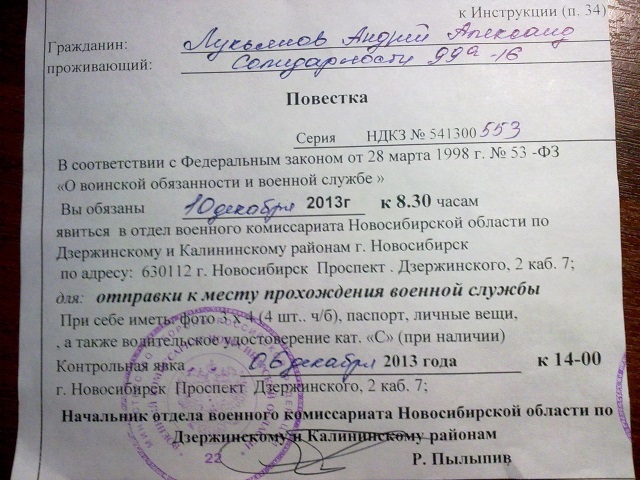
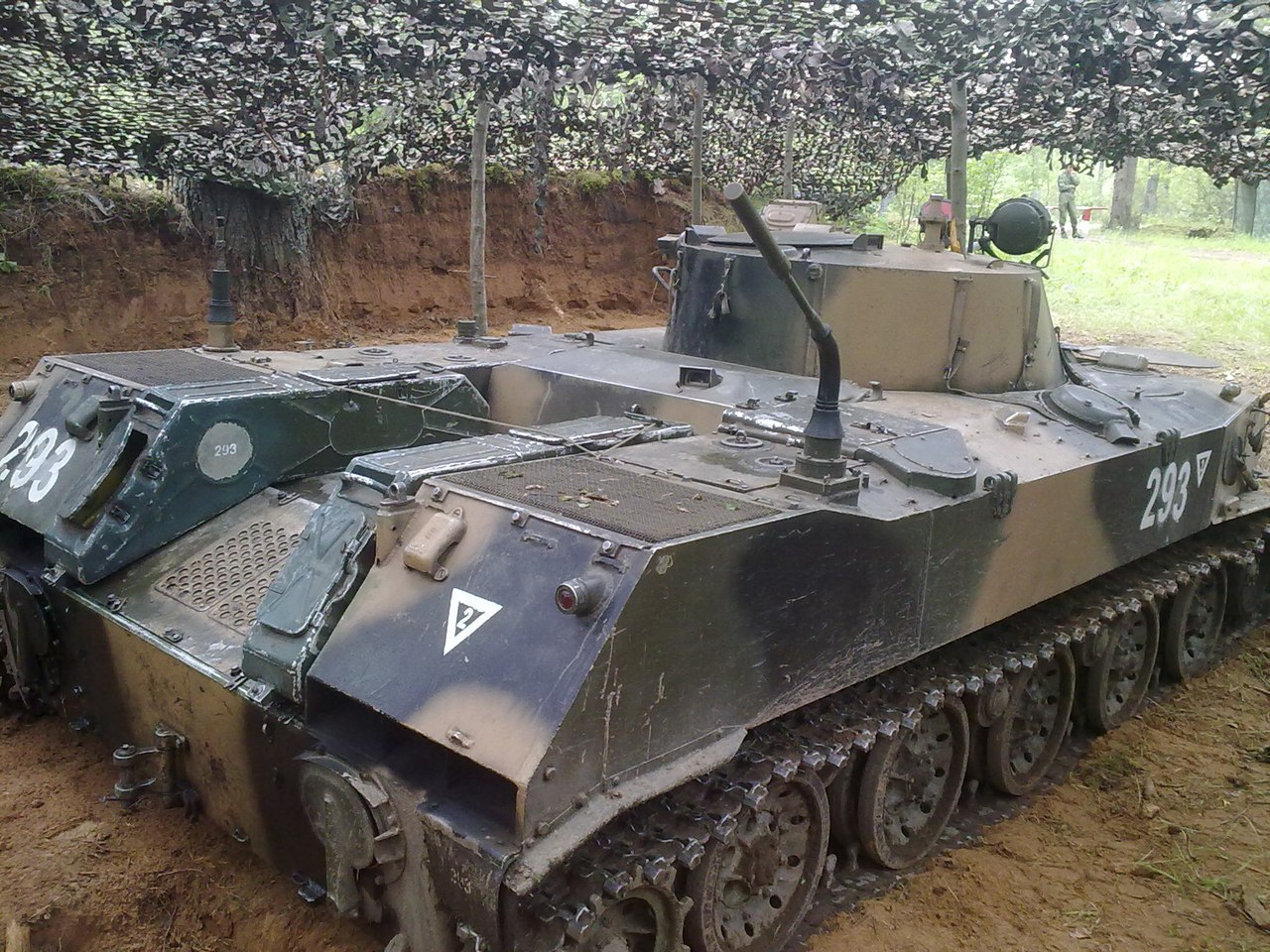
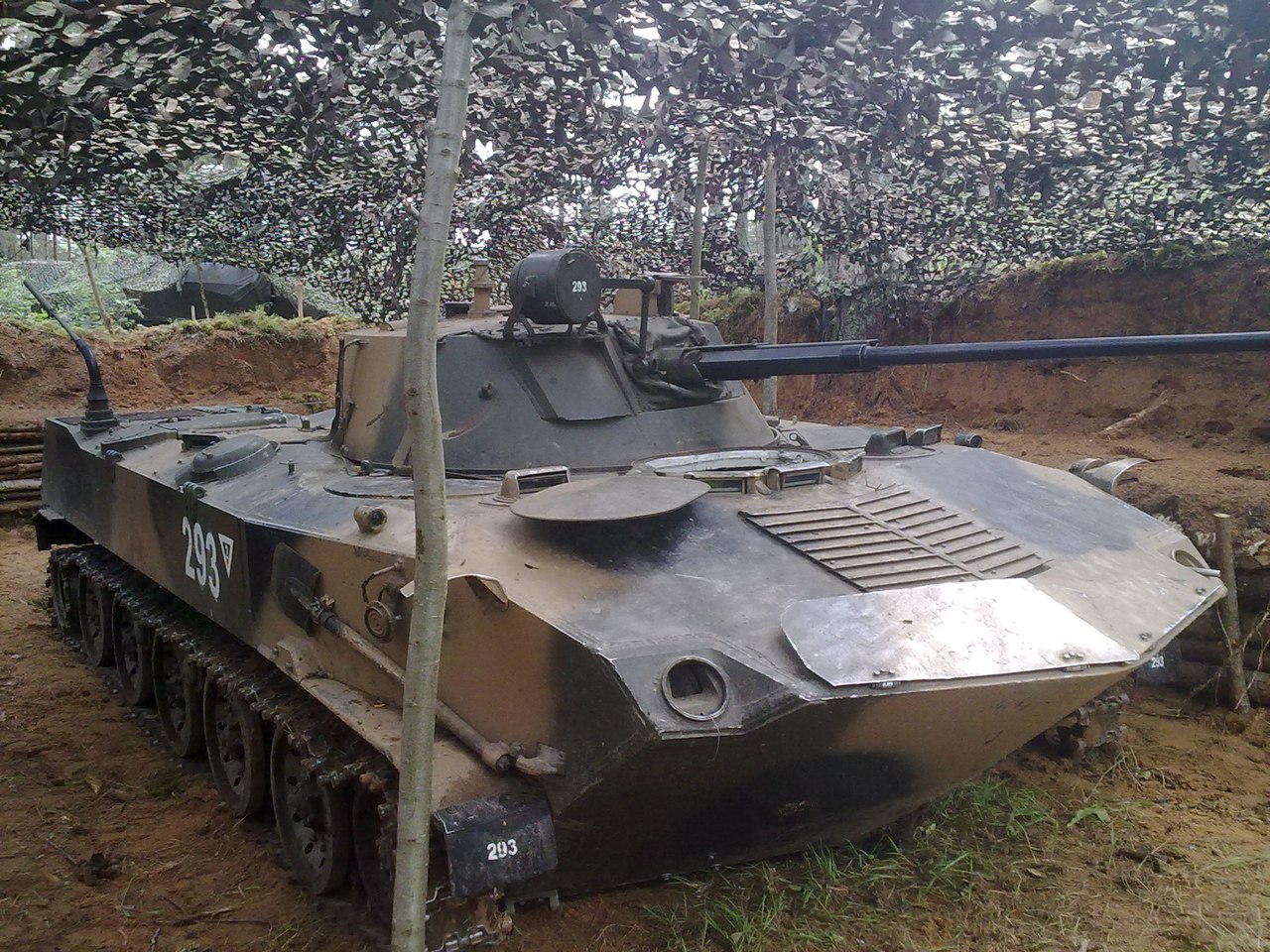
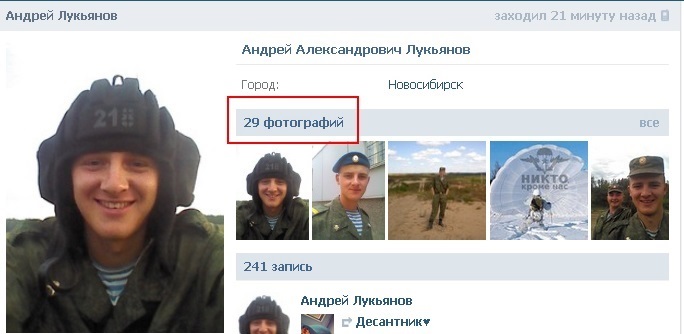
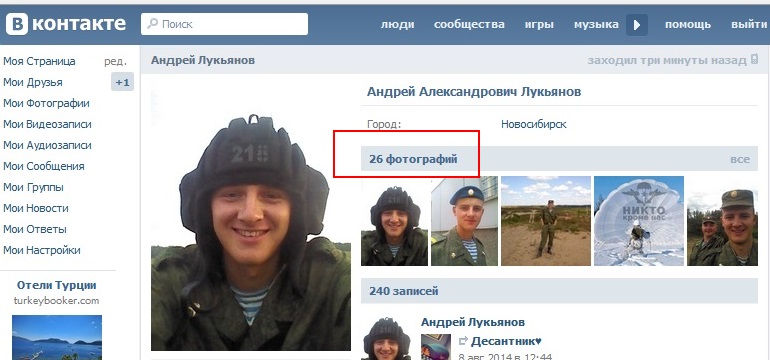
The significance of the draft notice is that it shows the soldier was drafted into the regular Russian army, and did not join the separatists as a volunteer.
In the case of another soldier (Dima Dolgov), his account showed no
new log-on time stamp, but the number of his photos went down from 145 to
96 today.
As we know from Pavel Durov, the founder of VKontakte, who left Russia, the Federal Security Service (FSB) is routinely provided access to users’ account on demand without a warrant. Recently, a new law grants even more requirements for cooperation between the FSB and social media platforms.
So Russian authorities could have accessed these accounts and tampered with them to remove anything that might confirm the Ukrainians’ claims.
But it’s also possible that the soldiers themselves accessed them and removed material that they were concerned could get them into trouble, or their relatives, who might have their passwords, could have logged on to the account and removed pictures or closed the accounts altogether. We just don’t know.
One soldier’s account in the list shows an update stating, “I’m alive, everything’s fine with me, and I wasn’t in Ukraine.”
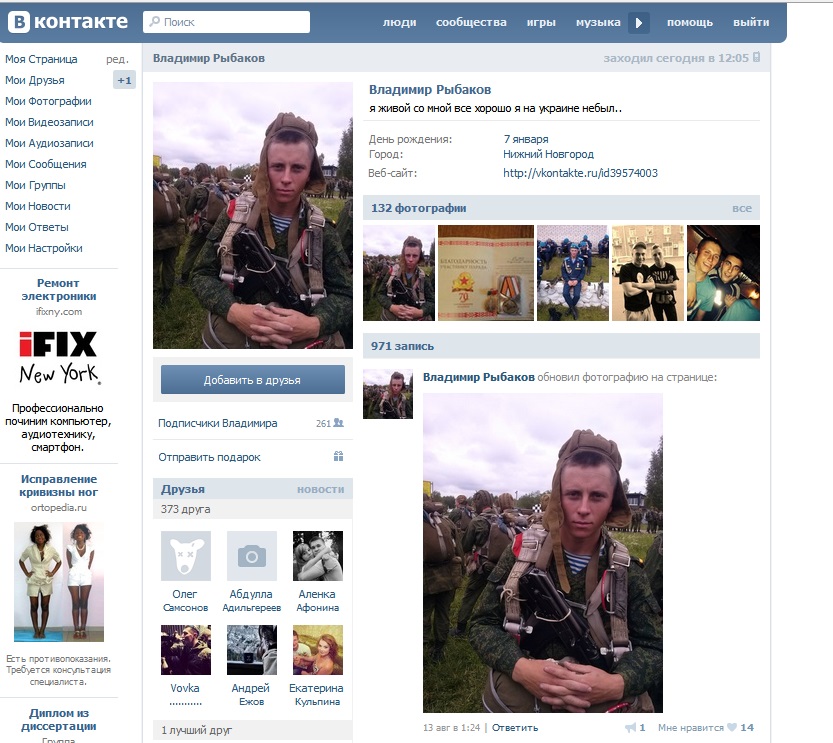
There are also Russian bloggers like this one busy debunking the theory that these paratroopers’ VK accounts prove the claims of the Ukrainian army, but only by saying that some of the accounts have been accessed since the battle in Lugansk Region on August 15-16.
But they can’t explain why so many of the accounts have not been updated since those dates, or why accounts have been closed or tell-tale pictures have been removed.
Ever since the announcement by Ukrainian journalist Roman Bochkala and Ukrainian national security spokesman that Russian paratroopers had been captured in Lugansk region along with their BMDs and documents, the Russian press and social media networks have been mining the social media pages of soldiers in the 76th Guards for confirmation of the claims.
As we reported, the sudden appearance on kremlin.ru of a decree from President Putin honoring the 76th Guards — five months after the military annexation of Crimea — as well as a trip to Pskov to hand out the awards yesterday by Defense Minister Sergei Shoigu have fueled the rumors that soldiers were killed and/or captured in Lugansk Region, necessitating such a high-level response.
Some of the items said to be found with the BMDs included Russian soldiers’ credit cards, passports, military ID, and evening rolls calls.
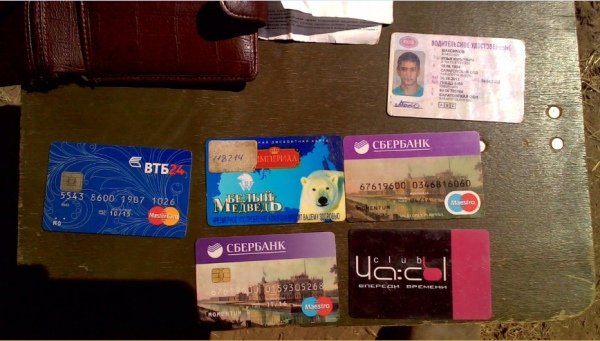
One name found on a weapon matched the name of a man on VKontakte who had a picture of a soldier with a gun in his profile, but the man was a war gamer, didn’t seem to be on active duty, the picture a stock photo, and the weapons didn’t match anyway.

Another man, Nikolai Krygin, whose ID was reportedly found in Lugansk Region matched the name and birth date of a man with a VKontakte profile in the Airborne Troops from Pskov.
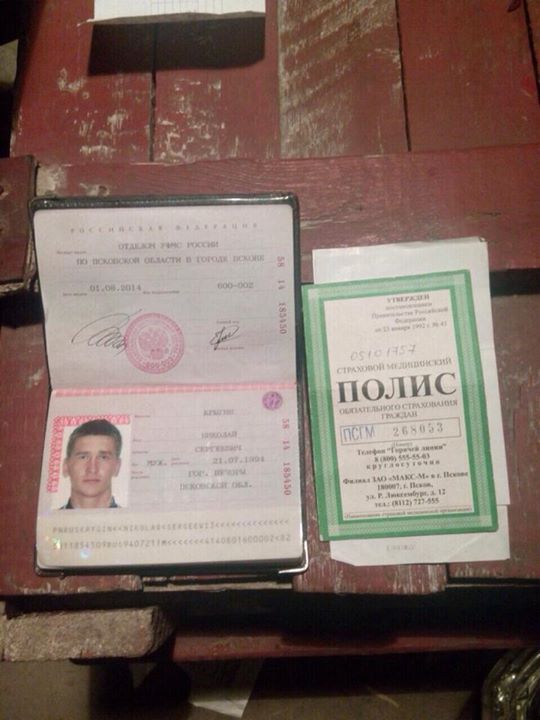
His pictures contained a photo of paratroopers after a jump.
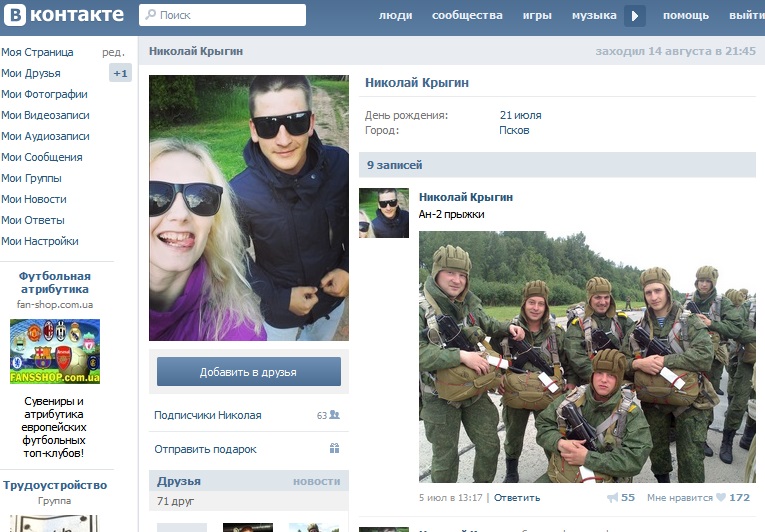
Among his friends were many other paratroopers, shown in distinctive light blue berets or in jump helmets, and there was even one man who uploaded a photo with the GRU’s slogan on a board:
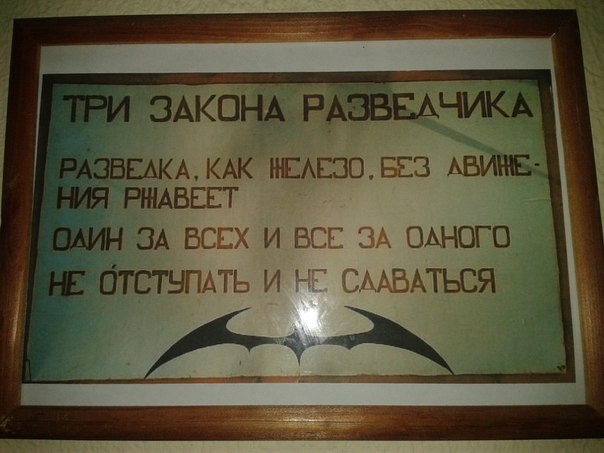
Translation: Three Laws of the Scout: Intelligence, like iron, rusts without movement. One for all and all for one. Don’t retreat, don’t surrender.
The GRU reportedly ceased to use the bat symbol in 2002, replacing it with a double-headed eagle on a globe with arrows and a carnation on its talons.
None of the photos showed any scenes in Ukraine, although one soldier had a video of Russians battling Ukrainian nationalists at a demonstration that turned violent in Kharkov, and others had anti-Ukrainian messages.
RBC.ru (RosBiznesKonsulting or RBK), a relatively critical Russian business publication, has investigated the claims regarding the documents found in the BMDs in Lugansk Region in several articles.
RBC attempted to get a statement from a man who used a pseudonym who appeared to be in the paratroopers and who had expressed grief about Krygin’s alleged death, but he refused to comment.
Several bloggers claimed that there were now messages of condolences for Krygyin, the common Russian saying “We remember. We love. We grieve.” But we couldn’t see the comments, either because they are on privacy filters, or because they’ve been removed.
Krygin, age 20, began his service a year ago. A source in the Airborne Troops refused to confirm or deny for RBC the information about the 76th Guards’ possible involvement in armed conflict in southeastern Ukraine, saying he had no precise information.
One Ukrainian blogger Aleksandr Makarenko of Kharkiv came up with a list of 15 paratroopers published on his Facebook page that he believed were killed or captured in battle in southeastern Ukraine.
A Russian LiveJournal blogger 67viktor has impressively gathered these all in one place and linked the names from the BMD documents to VK accounts all showing pictures of paratroopers.
We were unable to find the page of condolences he found and wonder why it’s showing the Ukrainian language:

All but two of these accounts have not been visited or updated since late August 15 or early August 16, which could confirm the bloggers’ claim that they are dead or captured.
While in theory soldiers in training in Russia might not update their social media accounts, for a group of 15 paratroopers not to update pages in the last week when they had in previous weeks seems odd. Here, too, there were condolences on some of the pages, and several of the pages had filled up with anti-Russian hate comments from Ukrainians.
RBC reiterated that an official representative of the Defense Ministry Igor Konashenko discounted the Ukrainian army’s claims and said the forms used in the documents were five years out of date. He said that a unit wouldn’t drag around such large amounts of documents, including a journal of the unit’s dismissals. RBC also cited military expert Col. Viktor Murakhovsky (reserves) who said the supposed findings were “the latest element of the information war.”
Murakhovsky believes that if Kiev or its Western allies had proof of the deployment of Russian forces, given US and NATO capacity for intelligence, that they would have brought it forward. “Soldiers don’t have passports, a military card takes its place, and the officers have identification,” he said.
Valentina Melnikova, the head of the Union of Committees of Soldiers’ Mothers also told RBC that she also didn’t know of any confirmation that soldiers were fighting in southeastern Ukraine. While some mothers have called and claimed that their sons were serving in Lugansk, this turned out to be only a rumor, she said. She knew of the deaths of only two contracted soldiers from Nizhegorod Region. Vladimir Ruban, head of the Ukrainian Center for POW Release said he did not know of any cases reliably confirmed of Russian soldiers in Ukraine.
Ruban, like other sources, said that a person might have a Russian military background, but not have been formally sent to fight, and instead could be a volunteer. Yet journalists at Novaya Gazeta have confirmed that the Russian draft system has been used to identify and recruit such volunteers.
Mining the social media pages of soldiers every time they seemed to be tied to combat, capture, or deaths in Ukraine has become one of the biggest online sports on both sides of the conflict in Russia’s war against Ukraine.
In some cases, the stories just don’t pan up and those trying to use this form of evidence are discredited.
But the persistence of clues from soldier’s remarks, such as this one who says “our soldiers are dying in Donetsk” have a cumulative effect, especially when matched with persistent citizens’ uploads of videos of Russian armored vehicles in southeastern Ukraine which have been verified.
This footage, which was subsequently geolocated,
came only days after a large column of VDV (Russian Airborne Forces)
BMD-2s was seen near the border on the Russian side: first, at the junction of the road to the border near Kamensk-Shakhtinsky, and then only 10 km from the border on August 15; features of these vehicles match those captured.
Ultimately, the belated Suvorov awards — five months after the annexation and three months after even journalists were awarded for their service in Crimea — seems odd, and Shoigu’s personal visit to Pskov indeed appears disturbing.
The Russian Defense Ministry published a notice on its website yesterday, August 22 regarding a visit to Pskov Region by Defense Minister Sergei Shoigu. Shoigu attended a ceremony to give the Suvorov award for valour in battle to the 76th Guards Air Assault Division of Russian Airborne Troops from Pskov.
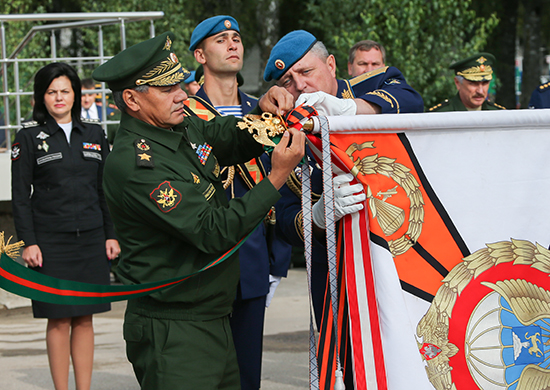
The ceremony followed notice on kremlin.ru that President Vladimir Putin had issued the Suvorov award on August 18 to the 76th Guards “for successful fulfillment of combat assignments” and “courage and heroism” without specifying where the combat took place. The measure prompted intense speculation as the timing was five months after the forcible annexation of the Crimea, yet the same week as Ukrainians claimed capture of the Russian paratroopers and tanks.
Then came the Defense Ministry notice August 22, amid media reports that Shoigu had made an unplanned and unannounced visit to Pskov.
In a speech at the ceremony, Shoigu said (translation by The Interpreter):
On Russia’s State Flag Day, the head of the Defense Ministry issued the Order of Suvorov to the famed division:
“On this solemn day, I would like to note that throughout many years, the soldiers of the division have been a model of service to the Fatherland, demonstrating fidelity to the best traditions of the Russian army.”
The Defense Ministry recalled that the personnel of the division have taken part in the deterrence of inter-ethnic conflicts in Armenia, Azerbaijan, Ossetia and Kosovo. A notable place in the biography of the division is the participation of the paratroopers in the counter-terrorist operation in the North Caucasus.
“This year you also performed with honor special assignments in returning the Republic of Crimea to Russia,” the head of the defense ministry noted.
“I believe that the award to the division of the Order of Suvorov is symbolic. Service in the Airborne Troops inherently implies the highest professionalism and loyalty to Suvorov’s science of winning not by numbers but by skill. The training conducted recently visibly demonstrated that Russia can and will count on you in resolving the responsible assignments in defending national interests,” the Defense Ministery emphasized, speaking to the paratroopers.
No mention was made of active combat in southeastern Ukraine.
While in Pskov Region, Shoigu laid flowers at a memorial to paratrooper warriors.
As we reported on our Ukraine Liveblog, on August 21, Ukrainian journalist Roman Bochkala reported that the Ukrainian army had captured Russian paratroopers and seized BMDs and documentation in Lutugino District in Lugansk Region.
The Russian Defense Ministry denied the reports, saying that the documents purported to be found in the BMDs did not match the format currently in use in the Russian Armed Forces.
An electrical tower in Moscow has been painted in the blue and yellow colors of the Ukrainian flag, gazeta.ru reported.
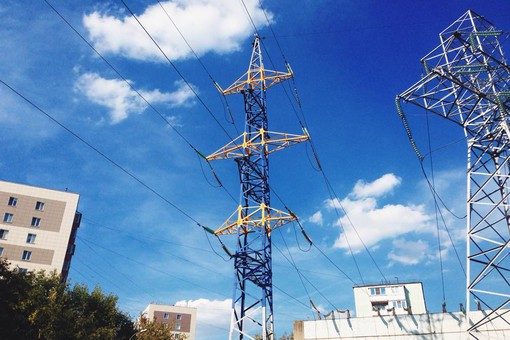
The electrical transmission tower in the southwest district of Moscow on Remizova Street near the Nagornaya metro stop has been painted by unknown persons.
Four people have been charged with “hooliganism” in a high-profile prank involving the painting of the star on a Stalin-era building in Moscow in the colors of the Ukrainian flag.
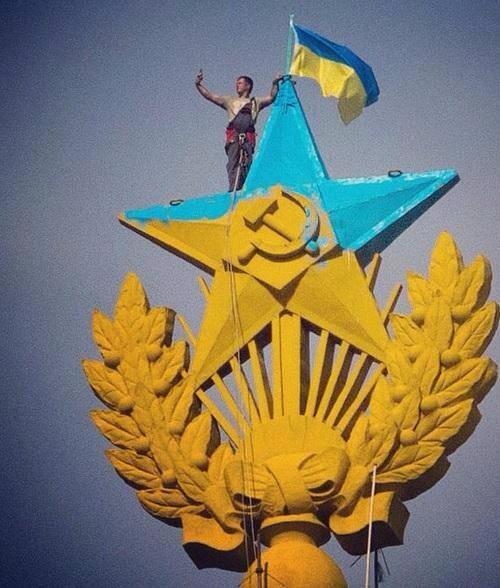
Worker assigned to removing flag takes a selfie.
Yesterday international headlines and social media were filled with pictures of a golden star touched up with light blue paint atop one of the seven famous Stalin gothic buildings in Moscow, on Kotelnicheskaya Embankment
The alleged pranksters jumped off the roof of the building with a parachute and were promptly arrested.
In Moscow’s Tagan Court today, Aleksandr Pogrebov, Aleksey Shirokozhukhov, Anna Lepeshkina and Yevgeniya Korotkova were ordered under house arrest until 19 October, slon.ru reported, citing Interfax.

Aleksandr Pogrebov in court on 21 August in Moscow. Photo by
Sergei Bobylev/ITAR-TASS.
Investigators sought pre-trial detention, saying the defendants could interfere with the investigation or continue to break the law. But the judge ruled that house arrest would be sufficient.
The four pleaded innocent, saying they had not painted the star, but had climbed on top of the building to perform a group parachute jump after seeing unknown persons painting the star.
The golden star was topped with blue paint some time during the night of 19-20 August so that it resembled Ukraine’s colors, and a Ukrainian flag was also placed on the spire.
Russia’s government consumer watchdog Rospotrebnadzor closed down 4 McDonald’s restaurants in Moscow today, ostensibly for sanitary violations, Telegraph reported.
The closures are likely to be interpreted as a Kremlin-backed swipe at the
United States in the wake of mutual sanctions and diplomatic tussling over
the civil war in Ukraine.
McDonald’s issued a statement confirming the temporary closure of the
restaurants, including its famous branch on Pushkin Square – the first in
the country to open, before the fall of the Soviet Union.
“We are studying the substance of the complaints in order to define what
action is necessary in order to open the restaurants for customers as soon
as possible,” it said.
The move was seen by some as symbolic of alleged Russian popular attitudes towards the West and even capitalism and discounted by others:
There were no protests about McDonald’s restaurants before the Crimea war, so indeed it is a symbolic gesture for the Kremlin.
The first stores are associated with the Yeltsin era of liberalization, and when the first one appeared in January 1990, long lines formed for many blocks due to the novelty of fast food.
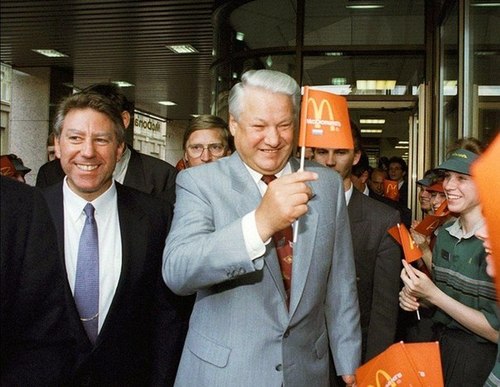
Yeltsin at the opening of the 2nd McDonald’s restaurant in 1993.
McDonald’s faced many challenges in starting is business, weathering the failed coup, the White House rebellion and the ruble crash and many cultural differences.
For example, at the time, there was a custom in most Soviet establishments of taking off one’s coat to leave with a clerk at a coat-check — McDonald’s dispensed with this custom as time-consuming and restrictive, even though it was one of the ways the Soviet Union created “full employment.
Yeltsin himself was said to marvel at the salary a McDonald’s restaurant worker earned from the foreign company, which he claimed was higher than his own in rubles at the time.
The New York Times columnist Thomas Friedman famously said in his book The Lexus and the Olive Tree:
“No two countries that both had McDonald’s had fought a war against each other since each got its McDonald’s”.
But as we saw in the post-Soviet republics in the 1990s and 2000s, a country could still be at war with itself, cracking down on mass demonstrations and minorities.
If the issue wasn’t about Western capitalism, then we wonder why web
entrepreneur and pro-Kremlin propagandist Konstantin Rykov took a sarcastic swipe
at what he claimed as hypocritical American entrepreneurial methods, revealing that the McDonalds was subsidized because it has rent of only 1
ruble a square meter.
Translation: Invisible hand of the market…McDonalds pays 1 ruble for rent of land in the center of Moscow.
The story is more complicated than that, of course, since when
McDonald’s first came to Moscow, under Soviet law, a joint venture had
to be formed with the Russian company,
in this case the Moscow City Soviet, or council, getting 51% of the shares. Quite the visible hand.
As with a number of businesses and non-profits in those years, the
city fathers offered low-cost or free rent to attract business and
grants. Leave aside the problem of having City Hall run restaurant
businesses, Mayor Luzhkov then for many years repeated the bounties of
McDonald’s profits, more than making up for the symbolic rent.
Eventually, the McDonald’s corporation bought out the Russian
share in the company, but evidently the rent stayed low. Yet McDonald’s
then proceeded to invest $5 billion in new stores and renovations of
existing properties because until now it was thriving — an investment now in jeopardy with the
politicized closings.
The different reactions from Russians outside the propaganda vector has been interesting:
Translation: Try to explain to an American or European why the closure of the McDonalds upsets you. They will look at you like at a cow.
Nadezhda Tolokonnikova (@tolokno), one of the members of Pussy Riot jailed for the punk prayer in the Russian Orthodox Church, is referring to how uncool low-cost junk food is seen in America by certain classes of people, but in both Russia and America it is seen as a convenience particularly for working mothers.
Translation: Zhirinovsky: 15 years ago I stompoed on a Big Mac and now the McDonalds is closed.
Translation: There’s a mass closure of McDonald’s restaurants in Moscow. Where will people [with degress] in the humanities work now?
Translation: McDonalds is at the front line of Putin’s war with Russians.
What blogger Oleg Kashin means is a sense other writers have conveyed, that the sanctions or actions against the West seem to hit harder on Russians themselves.
Translation: Rospotrebnadzor has temporarily closed four McDonald’s restaurants in Moscow… The lastest dangerous enemy.
Translation: McDonalds…get out of Russia…!!!
The tragic events in Ferguson, Missouri have provided an occasion for facile moral equivalencies between the US and Russia, with the belief that now the “US has a problem” in trying to make any case of criticism of Russia’s massive human rights violations, and Ferguson will “make it harder” to continue this critique.
Yet
if this were really the case — and it’s not — Kremlin propagandists
and their supporters wouldn’t have to exert so much effort to claim it, and resort to so many manipulations, distractions and outright falsehoods to make their point.
It would seem there was no shortage of photos to use from Ferguson,
Missouri, the scene of 10 straight days of unrest following the shooting by a white policeman of
an unarmed black teenager who was a
robbery suspect. While narratives of what occurred differ, many people agree that police in this and other states have become overly militarized and have deployed alarming amounts of hardware on protesters, most of whom have been peaceful, although some of whom have thrown rocks and Molotov cocktails.
Yet pro-Kremlin web entrepreneur Konstantin Rykov fetched an image generated as a joke more than two years ago on various meme websites and claiming it was a scene from Ferguson, where the Ku Klux Klan, who have not been seen there during the unrest, are supposedly chasing black youths.
Translation: Ferguson now.

Even some Russians looking at this tweet showed some skepticism.
Translation: Really? That isn’t a house of horrors at an amusement park? ))
On Twitter, linked to his blog, Rykov also quoted the question of a Cuba state news agency — hardly an independent commentator — “Has the Ku Klux Klan really come back with such force?” — as if it were present, although there have been no such reports.
Rykov has kept up a barrage of exaggerated material like this:
Translation: The occupation forces of the Washington junta blocked all the roads around the American city of Ferguson under seige.
Although he has also reverted to form — racism is widespread in Russia — when he shows scenes of looting and never peaceful protest:
Translation: Owners of stores in Ferguson arm themselves for defense from looters.
And of course uses that staple of Kremlin propagandists, the racist themes about Obama:
Translation: I know they passed like shadows/Not touching your flame/Many you sat on your knee/And now you sit so with me. [From Yesenin’s poem ‘You Don’t Love Me”-–The Interpreter]
Rykov has also been fanning the flames with tweets like this:
Translation: Who do you sympathize with in the “race war” in Ferguson? For whites – favorite. For blacks – retweet
This provocation earned 184 re-tweets and 61 favorites (as of this writing).
The tweet linked to a blog post about an article translated from English into Russian by Inosmi from the New Republic — “The Russian Media Thinks a Race War is Brewing in America”by Josh Kovensky” — itself a compilation of some of the most exaggerated accounts of Ferguson by the notorious ultranationalist Russian group Sputnik and Pogrom. Rykov drops the critical title and frame supplied by the New Republic author in discussing these sources, and presents it as validation of this Russian coverage by a US source.
Of course, Russia and the US are very different countries; the US population is now more than twice the size of its old superpower rival since the Soviet Union broke up, and while local police in Ferguson have detained journalists, they tweet through the experience and get released within an hour, unlike their Russian counterparts, who can go to jail for years or wind up dead.
More worrisome in terms of comparison is how the two countries address minority rights, Russia has a past involving mass crimes against humanity against its Muslim minorities such as Crimean and Chechens and brutally suppresses any riots of its own. In the past 18 months, Russian forces have killed more than 330 terrorist suspects and arrested at least 500, mainly in Dagestan, and interrogated many thousands more, often using torture. This response against terrorist attacks dwarfs not only European countries but other countries that have battled problems of terrorism.
One seldom hears about any demonstrator in Russia using a Molotov cocktail in the land where they are widely believed to have been invented (actually, it was the Finns who invented them in the Winter War against the Soviet invasion, and named them sarcastically for Stalin’s Foreign Minister Vyacheslav Molotov.)
That’s because protesters rarely get that far, like these would-be protesters in Siberia; the dozens of people injured by police and already sentenced for mass protests against Putin in 2011 are tried for “incitement” or “organizing,” not violent acts, and have sentences of 4-5 years of prison. The cases of police brutality in Russia are legion, with few tried by Russia’s own courts.
This hasn’t stopped the Kremlin’s propagandists from distracting from their own considerable domestic problems — and their waging of a war against neighboring Ukraine — by invoking Ferguson to discredit the US.
Rykov has also grabbed on to any commentary he can distort, such as with this tweet and post:
Translation: The Wall Street Journal: Events in Ferguson have deprived the USA of the right to criticize Russia.
The article doesn’t link to the WSJ original, but to RT.com, the pro-Kremlin TV and Internet site aimed at the US, where Rykov gets a lot of his material.
At that article, we get a link to another RT article with the same theme
This article finally takes us to the Wall Street Journal — to both the article itself — a blog post by Robin Wright titled “Dictators Upbraid US for Racial Unrest in Ferguson” and comments made by readers. Says Wright:
Several countries that have faced severe criticism in the State Department’s annual Human Rights Report are now boldly engaging in a kind of diplomatic touché-to-you in their condemnation of the U.S. Some may be expected from autocratic regimes. But the crisis in Ferguson undermines the moral high-ground that the U.S. has long claimed.
This article at least makes it clear from its very title whose doing the talking — dictators with records far worse than anything occurring now in the US — and with far less remedy, without free press or independent judiciary.
But it omits any serious analysis of why the US can retain a moral high ground — when it faces individual tragedies like Ferguson, it can deploy a wide range of remedies, from lawyers to peaceful demonstrators to state troopers better able to work with the community to free media discussion — by contrast with extrajudicial execution of hundreds of terrorist suspects, as in Russia, with the press largely intimidated off the story.
Recently it was suggested that Rykov start an English-language Twitter account, and so he has. So far it has only 200 followers — which suggests how far you can get with pro-Kremlin trolling if you don’t have a network of pro-Kremlin volunteers and paid trolls to respond.
A protester has managed to climb atop one of the seven Stalin gothic
buildings in Moscow and paint its star in the light blue and yellow
colors of the Ukrainian flag.
The buildings, known as the Stalinskiye vysotki [Stalin
sky-scrapers] or in English “the Seven Sisters” were commissioned by
Stalin and embody the ugly gigantism of the Soviet era.
The one painted is on Kotelnicheskaya Embankment.
Aleksey Venediktov, editor-in-chief of Ekho Moskvy was among the first to report the stunt on his Instagram account.
Translation: An excellent photo of Kotelnikov with the flag — everything is visible. Thanks, Martin.
LifeNews, a Russian pro-government channel close to intelligence and law-enforcement forces reported that the painter managed to jump off the building with a parachute.
When the story came out about the lost cell phone of Ramzan Kadyrov, president of Chechnya, we thought he might ignore it or refute it — it wasn’t on his infamous Instagram account at first.
Memorial Society, Russia’s leading human rights group, indeed reported on their website that Chechens had told them of mass summonings for interrogations of a thousand people on the night of 18-19 August when Kadyrov had reportedly lost his phone during a large event to open a historical museum with a reconstruction of a medieval Chechen village. Even children were questioned as to where it could be.
Why were they sure it was 1,000? Because that’s how many guests there were at this elaborate state festivity to open the village, which had a stone tower, workshops of the era with antique objects, an infirmary and a mosque as well as dwellings. A wedding was staged for the occasion, with professional dancers. When an announcement on the loudspeaker failed to turn up the lost phone, authorities got a list of all the guests and hauled them all in for questioning.
Numerous Russian and international media outlets picked up the story.
But seven hours ago, Kadyrov made a statement on his Instagram. (The Interpreter had provided a translation):
A world-scale event has taken place in Chechnya. Dozens and hundreds of media outlets have written about this with the help of some human rights organization. Throughout the entire day, journalists from all over the world are calling Grozny. Everyone is wondering, where is Ramzan Kadyrov’s TELEPHONE!!! And everyone is asking whether Kadyrov’s telephone has been found?
Instead of asking the question of whether it was true that the telephone was lost? They also claimed that in the course of looking for my LOST OBJECT a thousand people were questioned! I am forced to emphasize that this is an outrageous lie, whoever made it up.
On the day of the opening of Shira-Yurt, Heda Tsakayeva, the head of the dance ensemble Niysarkha, lost her phone. The leadership of the Shalin Interior Ministry Department [police] quickly took measures and the mobile phone was returned to Heda. I don’t know how many people they questioned. Even if it were one thousand or ten thousand, it means they were doing their job and not leaving even such an insignificant fact unattended. As for my telephones, both mobile phones are in front of me, they are maintaining connections well and don’t intend to get lost! #Kadyrov #Telephone #Disinformation.
So..it turns out that Kadyrov indeed thinks nothing of sending his police to go out and interrogate even a thousand people, even if it isn’t his own lost phone, but his entertainer’s mobile.
Next time he might want to use Find My Phone app.
And you would think he’s remember the name of the human rights group, since he sued its head, Oleg Orlov,
for libel back in 2009 when the group alleged that Kadyrov might be
behind the assassination of prominent human rights advocate Natalya
Estemirova. Ultimately, the case was dropped but then Orlov had to fend off a second case by Kadyrov’s lawyer.
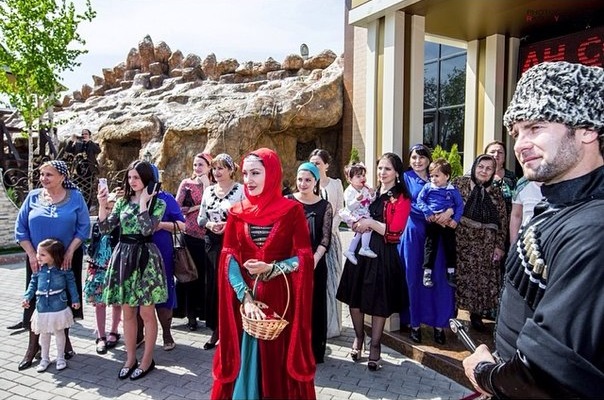
Heda at another Chechen wedding in April 2014. Photo by Rasul.
Siberian authorities have banned a series of protests and web sites organized by supporters of greater autonomy in Siberia.
But meanwhile, a bikers’ club trying to promote a higher birthrate of the Russian people is allowed to ride demonstratively through Novosibirsk.
Bikers such as the Night Wolves have increasingly been a visible part of the Putin regime’s aggressive nationalism and have been visible recently in a pageant in Crimea, as they were in Russia’s armed annexation in March.
Today the local TV channel OTS had a broadcast about a ride through Novosibirsk by a convoy of bikers who were stopping at every city on a country-ride tour to promote fatherhood in a campaign called “Fathers of Russia for Families with Many Children”.
Their slogan is, “Give Birth, Great Country!” which is an allusion to a Soviet-era song, “Rise Up, Great Country!”. Last week they were in Vladivostok.
for Novosibirsk Region, was interviewed by the TV channel and
enthusiastically supported the cause. She said “strengthening the family
is strengthening the state, which is very important.” She explained that
“the Russian Federation is of all nationalities,” so that it would
ostensibly not appear as a ethnic-Russian action only.
Yet in the
next frame, the bikers were shown at a Russian Orthodox church service,
and Patriarch Kyril of the Moscow Patriarchate was reported to have
blessed the group.
Andrei Trifanov, leader of the Dmitry Donskoy
Club of Siberian Motorcyclists said fatherhood was difficult, but needed
to be supported; “this is what a man is for as a man” he added, “to not
shirk his responsibility.”
Saint Dmitry reigned as
the Prince of Moscow from 1359 and Grand Prince of Vladimir until his
death in 1389. He was the first to challenge the Mongol authority in
Russia and was famous for his victory against the Tatars in the Battle
of Kulikovo (1380) on the Don River, a turning point for Russia under
the Mongol Yoke.
While the Russian government is happy to promote separatism and the “federalization” of Ukraine, it is harshly discouraging the same kind of sentiment at home about Russia’s regions.
Activists in two cities campaigning for increased autonomy for Siberia were detained this week in connection with banned rallies or pickets, grani.ru and activists report.
As Paul Goble noted on Windows of Eurasia today, by suppressing the march, Siberian authorities only ensured that the organizers’ message went even further. An article about increased autonomy and “federalization” for Siberia banned and blocked by Roskomnadzor, the state censor on the activists’ site only showed up mirrored on other sites. A handful of people concerned about local issues, and an artist who liked to stage happenings got way more attention than they could have dreamed if they had been left to demonstrate in a park.
Grani.ru reported that in Ekaterinburg, at the foot of the Ural mountains, two people were arrested for a picket “for federalization,” although one of them appears to be a heckler who came to bother the other demonstrator.
About 15-20 people came with t-shirts with the slogan “Stop Feeding Moscow,” a reference to people’s objection to the fact that regional raw materials and taxes feed a Moscow-dominated centralized state which then does little for regions. Some demonstrators managed to unfurl posters with the Ural Republic symbol, but were stopped by provocateurs — who were greater in number than the original demonstrators.
The arrestees were charged under Art. 19.3 (“disobedience of the lawful demands of the police”) and were held overnight. Feliks Rivkin, one of the activists who applied for a permit, told Grani.ru that their request for a rally “in defense of the Constitution regarding the federative system of Russia” was turned down; a request for permission for a mass picket was also rejected so they decided to hold several single pickets.
In Novosibirk, police apprehended the organizers of another march before the activists could get to the park where they had planned to assemble with posters, grani.ru reported. Some were picked up for interrogation or detained in advance, and others were blocked at an apartment where they were staying. One observer noted that at the scene, there were police and provocateurs, but no actual activists. A large bus sent to pick them up stood idling empty nearby.
Translation: Rally for Federalization of Siberia is at its
peak! 20 photographers, 5 camerman and 10 grim men ready to beat up the protesters, who didn’t come.
Roman Popkov reported on his Facebook page
that oposition activists Mikhail Pulin and Maria Katynskaya whose detention we reported last week were
released after being held for two days in jail in Altai. A case was
fabricated against them on charges of a “stolen phone” which they say
was planted in Mikhail’s backpack. The two are declared as “witnesses”
in this case.
Translation: @Svetulya2907: It’s starting.” Hah! The guy in the light pants commanded the goporya.
The term gopniki or goporya, a term from the Soviet era, is now increasingly used again to describe thugs or provocateurs, sometimes from Russian intelligence, sometimes from nationalist groups, who come to heckle demonstrators they dislike.
Translation: They’re some sort of provocateurs. Check out Ploshchad Truda (Ekaterinburg, Sverdlovskaya obl.) on @foursquare.
Translation: Our heroes! They were released! They did not lose their cool and held a new picket on the porch of the police precinct ) ) )
The increased discussion of the action then led to both support and backlash.
A sympathetic tweet from a Ukrainian:
Translation: Good work, guys, keep it up, from a spark burns a flame! Good luck in your beginnings! I take my hat off to your action!
Then less sympathy from Russians:
Translation: idiot minors should be taken on a tour of the Donbass, let them have a look at how playing revolution ends.
Translation: Is this a gay parade?
Translation: C*** numbskulls. Pouring water on little Obama’s mill, losers.
Translation: Khokhly, have you gone nuts? These guys are promoting an idea for which you’re killing your people in the east!
Khokhly is a pejorative term that Russians use for Ukrainians.

